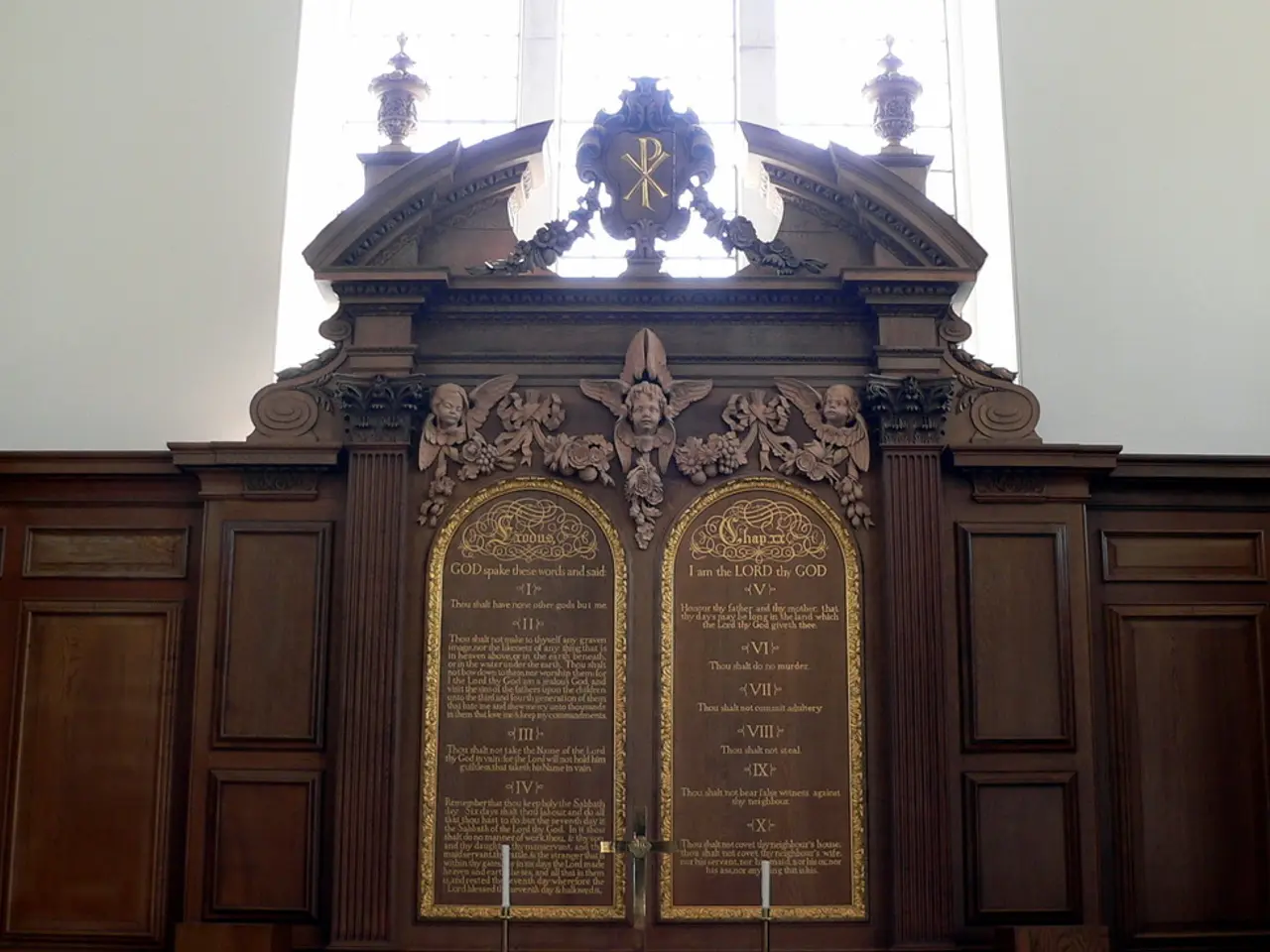Discovered Treasure for Scholars in Humanities: The Princeton Index of Medieval Art
In the world of medieval art, the two-headed eagle stands as a significant heraldic symbol, representing power, authority, and dominion. This emblem, known for its dual heads gazing in opposite directions, has been a common motif across various cultures and time periods, particularly in Late Antique and Medieval art.
The double-headed eagle held a special significance for the Byzantine Empire, symbolising its role as a bridge between Europe and Asia. After the Byzantine Empire's fall, the Holy Roman Empire adopted the symbol, reflecting its power and influence across Europe. In medieval heraldry, the double-headed eagle was a prominent emblem used by several European powers, appearing in family coats of arms and heraldic designs.
This symbol can be found in a wide range of artworks from the Late Antique and Medieval periods, including illuminated manuscripts, coats of arms, and religious art. In illuminated manuscripts, the double-headed eagle often appears as part of heraldic designs or symbolic motifs. In coats of arms, it is featured prominently, representing the power and prestige of noble families and empires. In religious art, the double-headed eagle is sometimes used to symbolise divine power or authority.
For those interested in exploring more about the double-headed eagle and its usage in medieval art, the Princeton Index of Medieval Art is an invaluable resource. This comprehensive database allows users to compare different renditions of the same motif and a variety of scripts, from Bastarda to Visigothic Minuscule. Users can search by fifteen categories, including region, motif, artist, patron, language, and script. By using keywords like "double-headed eagle," "heraldic symbols," "Byzantine Empire," and "Holy Roman Empire," and focusing on entries from the Late Antique and Medieval periods, one can delve deeper into the history and significance of this intriguing symbol.
The Princeton Index of Medieval Art is just one of the many research resources available at Princeton University. As the 2023-2024 Academic Year begins at Princeton, students have the opportunity to participate in Princeton Research Day, an event that encourages academic exploration and discovery. The database's extensive information on Late Antique and Medieval Artworks can be a valuable tool for students and researchers alike, providing detailed descriptions of artworks, their historical context, and the Library's collection.
Whether you are a student, researcher, or simply an art enthusiast, the Princeton Index of Medieval Art offers a unique opportunity to delve into the rich history of medieval art and heraldry. So, as the new academic year begins, take a moment to explore this fascinating resource and uncover the stories hidden within the intricate designs of medieval art.
The double-headed eagle, often used to symbolize divine power or authority in religious art, can also be a valuable subject for exploration in the realm of education-and-self-development, such as during the Princeton Research Day. Technology, particularly the Princeton Index of Medieval Art database, bridges the gap between medieval heraldry and the present day, allowing users to delve deeper into the history and significance of the symbol, including its usage in Late Antique and Medieval periods, and compare various renditions and scripts.




